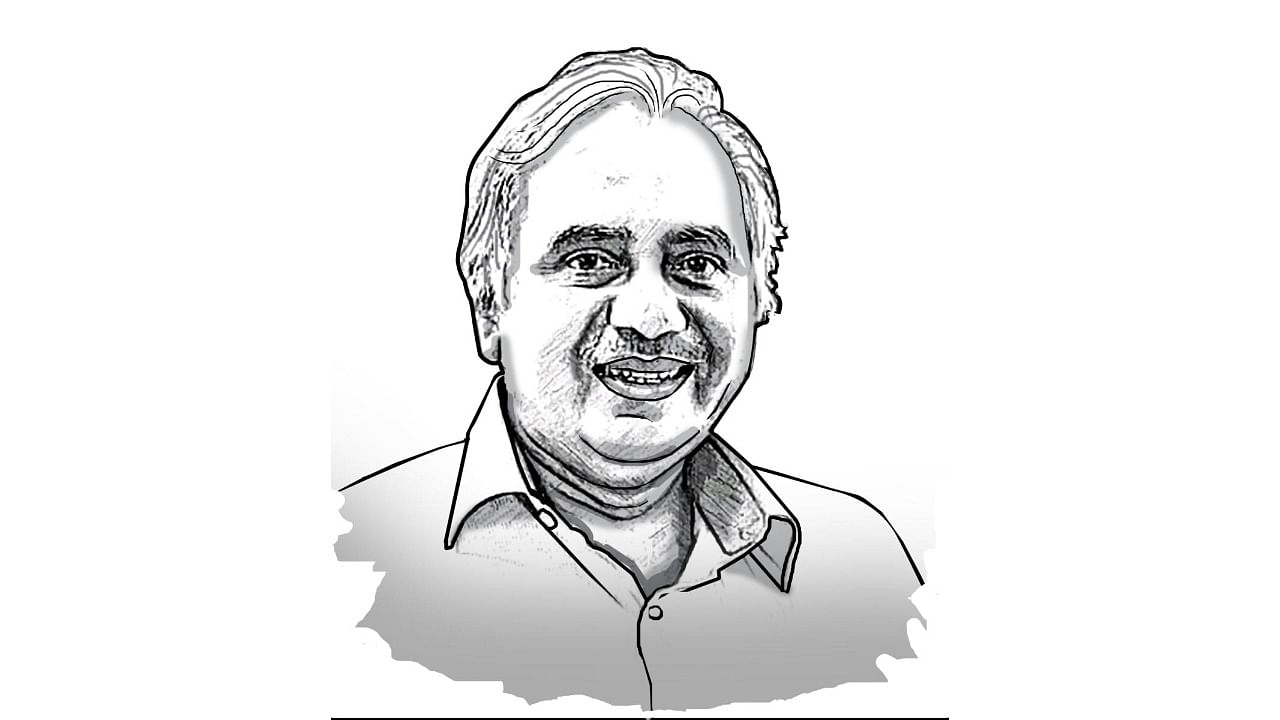
Rising motor fuel prices, high cost of domestic and industrial energy, long queues outside grocery shops, street demonstrations against the government are all indications of an immense, perhaps catastrophic, unrest that Pakistan is likely to be hit with. Sri Lanka is already close to a descent into anarchy – with protesters having stormed President Gotabaya Rajapaksa’s presidential home on Saturday, forcing him to flee. There have been reports of incidents of lynching and robbing of wealthy citizens in some parts of Colombo in recent weeks. Cities in Pakistan seem to be not too far off from witnessing similar scenes.
The International Monetary Fund, which Pakistan approached for a $6 billion loan to tide over its foreign exchange crisis, has imposed certain pre-conditions. Important among them are raising fuel and electricity rates and instituting a mechanism to guarantee zero corruption. While the government has promptly complied with the first, the corruption issue appears to be haunting the new dispensation.
Charges and counter charges of corruption is the norm of the day in Pakistani politics. Former PM Imran Khan had blamed the country’s ruin on earlier corrupt leaders. Paying him back in similar coin, the present Interior Minister Rana Sanaullah has certified Imran Khan’s reign as “rule by an incompetent mob”.
Truth is, profligacy has been the ‘standard operating procedure’ of every government, and rampant corruption and disproportionate spending on the military and its appended agencies inevitably became a part of the country’s economic programme. The politicians needed the Pakistan Army to remain in power, and the Army needed the fig leaf of political parties to remain relevant. In time, the Army, the clergy, and the political parties – the three power centres in Pakistan – have landed the country at the doorstep of a full-blown economic collapse.
Under tremendous pressure, the government has banned imports of almost everything that the common citizen needs to carry on normal daily life. It has even asked people to reduce the consumption of tea, an item that greatly adds to the import bill.
The Russia-Ukraine conflict is being touted as the cause for Pakistan’s economic troubles. The conflict no doubt has had an adverse impact on energy supplies and increased risks for investors, muddying the business environment. But this certainly is not the only, nor even the primary, reason for the economic slide in countries like Sri Lanka and Pakistan. As a report by the Asian Development Bank says, the Russia-Ukraine conflict has limited direct impact in most of the region, except in “the Caucasus and Central Asia, as well as Mongolia, which all have close trade and financial linkages with the Russian Federation”. This seems to be a correct assessment – given that not all the countries in South Asia are on the path to economic collapse as Sri Lanka and Pakistan are.
A singular, but not surprising, factor common to the economic predicament of Pakistan and Sri Lanka is the overdependence on the Belt and Road Initiative projects dangled as the proverbial carrot by China, leading both countries to the inextricable debt trap. Pakistan was on cloud nine when China offered billions of dollars to develop the controversial China-Pakistan Economic Corridor (CPEC) in 2015. Pakistan willingly became a pawn in China’s strategic gameplan of gobbling up big chunks of Indian territory in Pakistan-occupied Kashmir and build an all-weather road all the way to the Gwadar port for access to the Indian Ocean. The CPEC is under review and Beijing is not keen to invest any further until Pakistan’s economic situation improves. Besides, China will want to pressure Islamabad to align itself completely and unequivocally with it. Can Pakistan afford to do so?
This is not the first time that Pakistan has gotten into a deep economic crisis. A major crisis hit it when the US imposed sanctions on it in the wake of its nuclear tests in May 1998. Pakistan had then initiated unwise moves like freezing capital outflows, which had an adverse effect on foreign exchange inflows, and a drop in short-term lending by the State Bank of Pakistan (SBP), triggering a financial crisis. Even as it barely managed to extricate itself out of the mess, it was hit by the global financial crisis of 2008.
According to knowledgeable sources, sometime in 2009, Islamabad’s coffers ran out of foreign exchange. Many of Pakistan’s friends were slow to come to its aid as they evaluated what they wanted from it in return. Months later, during the Republic Day event in New Delhi, then Prime Minister Manmohan Singh is said to have offered to ‘park’ $500 million in Pakistan’s central bank as interest-free deposit to help it tide over the crisis. The offer was conveyed to Islamabad through trusted sources. Sadly, the then government refused the help, though it profusely thanked Singh for his gesture.
In the light of past experiences and given the freeze in India-Pakistan ties, New Delhi will have to carefully consider its steps if it wishes to respond to the unfolding economic crisis in the region. A bankrupt neighbourhood will invite not only political instability and chaos but also drive Pakistan further into the Chinese debt trap. Beijing is already rolling out a plan to broaden the BRICS membership, for which Pakistan, Iran and Argentina are aspirants. China as chair of BRICS could seek to include countries in South Asia that have gone belly up and infuse funds into their economy through the New Development Bank. India will then have no option but to shell out its share under Chinese leadership, and yet be considered an enemy nation to the recipients.
While the Indian economy can withstand the current headwinds, the smaller South Asian economies could buckle under China’s debt trap pressure if the Russia-Ukraine crisis continues to impact them. The emerging situation is both a challenge and an opportunity for New Delhi to script a new chapter in geopolitics and geo-economics. As a strong regional economy and an aspiring power in the emerging contours of the Indo-Pacific, India needs to recalibrate its ‘neighbourhood first’ policy, widen its ambit of economic assistance, and use the unfortunate but massive crises as a springboard to regain strategic foothold in the region.
